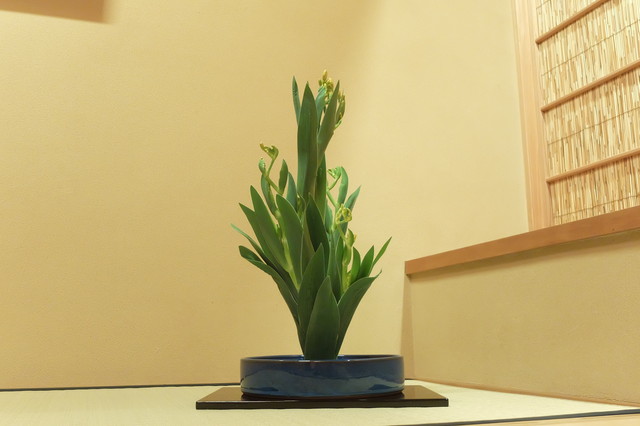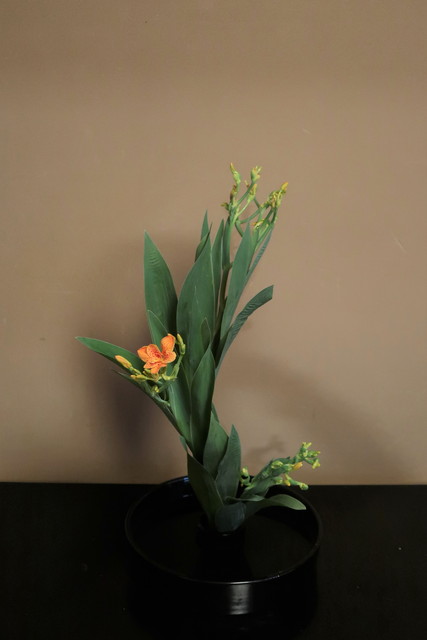生花 ヒオウギ
“祇園祭の花”
-The flower of Gion Matsuri festival-



古典いけ花 生花(せいか) / Classic ikebana SEIKA style
檜扇(ヒオウギ) アヤメ科 / Blackberry lily
扇を開いたような葉の姿が、宮廷衣装の装身具でヒノキで作られた扇・檜扇(ヒオウギ)に似ていることからその名で呼ばれます。平安時代の歴史書にこの檜扇で祟りを祓ったという記述が残っており、同じ名前をつけられた花が、いつの頃からか疫神退散の祭りである祇園祭と結びつきました。
暑すぎる京都の夏でもいきいきと広がる丈夫な青い葉に、橙の花が町衆文化と結びついた煌びやかな装飾によく似合い、現代でも変わらず7月の京都を彩ります。
平安時代にはすでに、現代でも使われる紙の扇(扇子)も作られ始めます。ヒノキよりも扱いやすく人々に広まっていった扇子は、神事、芸能、日常生活など日本の暮らしの様々な場面に登場します。とりわけ神事やお祭りで欠かせないのは、檜扇から受け継いだ神聖な力が信じられているのかもしれません。祇園祭でも、扇子は欠かせない道具です。
Blackberry lily is the flower of Gion Matsuri festival in Kyoto. Ancient Kyoto people believed that it can ward off evil spirit with their fun like shape according to mythology. This story was connected to Gion Matsuri festival which started when the emperor ordered a religious ritual to help against some epidemics.
Japanese people use fun at not only daily to make wind but also rituals and celebrations include like Gion Matsuri festival as a spiritual item.
In July, the month of Gion Matsuri festival, people arrange this flower on their entrance or window to streets.

長刀鉾の扇子。 The fun of “Naginataboko” (one of the decorated floats of Gion Matsuri)

御神輿が安置される、四条通の御旅所。右側にヒオウギがいけられる。 ”Otabisyo” is the place where Omikoshi (portable small shrine) stays during the festival period. Blackberry lily is arranged on the right.

御神輿が安置される一週間、御旅所には昼も夜も火が灯され続ける。 It is kept a light on the candle for one week during Omikoshi stay in Otabishyo.

